Think You Have Eczema? These Pictures Show Exactly How the Condition Manifests
Eczema is a very common skin condition that affects over 30 million people in the United States, according to Melanie Palm, M.D., board-certified dermatologist at Art of Skin MD. Though it’s common, if you have a pesky skin rash or an unexplained dry patch of skin, you might be wondering what eczema looks like. Ahead, we’re sharing pictures and descriptors of the skin condition so you can be sure you’re dealing with it, and not something more serious.
What is eczema?
Eczema is a form of dermatitis, or skin inflammation, that can present on different parts of your body. “Eczema damages your skin barrier function, weakening your skin’s ability to retain moisture and protect itself from external factors,” explains Geeta Yadav, M.D., board-certified dermatologist and founder of FACET Dermatology. “This causes skin dryness, makes skin look inflamed, feel itchy, and take on a rough texture.”
Although there is no cure for eczema, nearly half of the people who experience it will outgrow their condition before adulthood. “Effective eczema treatment is about managing the symptoms and trying to prevent further flare-ups, which are often caused by new or existing allergy triggers,” she says. Recognizing the appearance of eczema will help you figure out how to manage those flare-ups and let you know when it’s time to call the doctor for help.
Recognizing eczema on different skin tones
Variations in skin color can cause eczema to have a different appearance for different people. “While eczema may appear red on fairer complexions, it can present as brown, purple, or grey/ashy in deeper skin tones,” Dr. Yadav says.
The way you respond to your eczema flare-up (especially if you’re dealing with an itchy variety) can also change how it presents on your skin. “Active eczema or scratching can result in two types of pigmentary skin changes: hyperpigmentation, the darkening of skin, and hypopigmentation, the lightening of skin,” Dr. Palm says. “Hyperpigmentation is more common in people with darker skin tones. Someone with a lighter skin tone might experience more redness as a result of eczema, but in people with darker skin tones, eczema can present as brown or pink.”
Different types of eczema and what each looks like
Atopic dermatitis
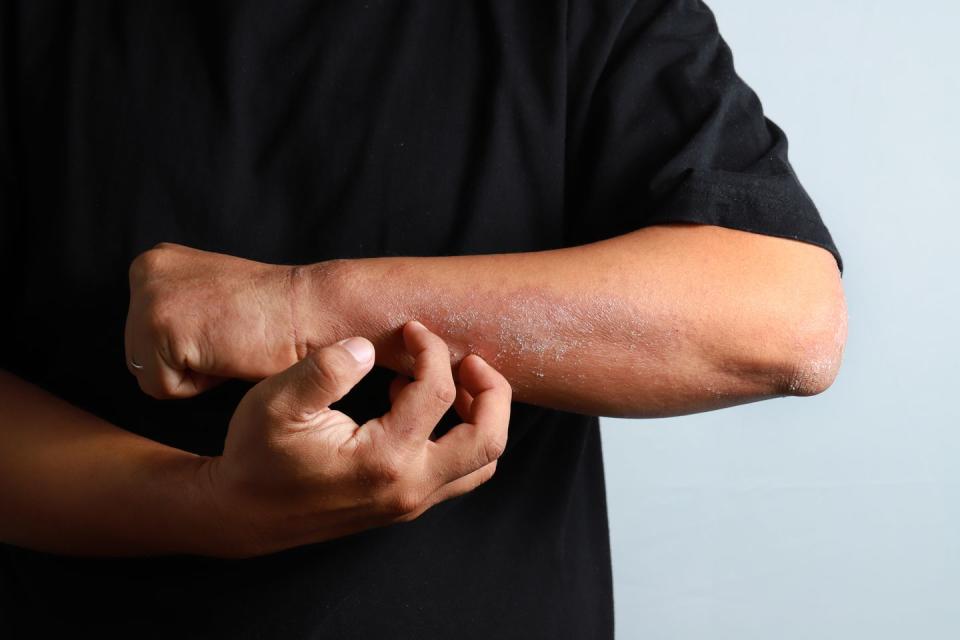
There are multiple types of eczema, with atopic dermatitis being the most common, according to, Saurabh Sing, M.D., a dermatologist practicing medical, surgical, and cosmetic dermatology for adult and pediatric patients in the Washington D.C. metro area. “It typically begins in childhood and is characterized by skin barrier dysfunction,” he explains.
“It’s not unusual for this form of eczema to occur in childhood but fade away as a patient ages,” according to Dr. Yadav. “Common risk factors for atopic dermatitis include a family history of dry skin, eczema, asthma, and/or food and environmental allergies—in fact, many people with eczema have a combination of these conditions. Classically atopic dermatitis can affect the folds of the elbows and knees as well as the hands and face.”
Nummular or discoid eczema
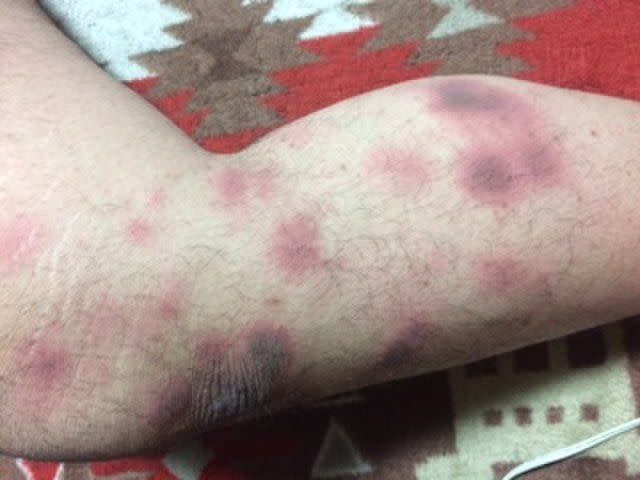
People who are suffering from nummular eczema may be able to recognize their condition by the shape of the rash on their skin. “Discoid or nummular eczema is characterized by its disk-shaped patches of itchy, red, cracked, and swollen skin,” says Dr. Palm. “It can occur in people of any age and is a chronic skin condition.”
Contact dermatitis
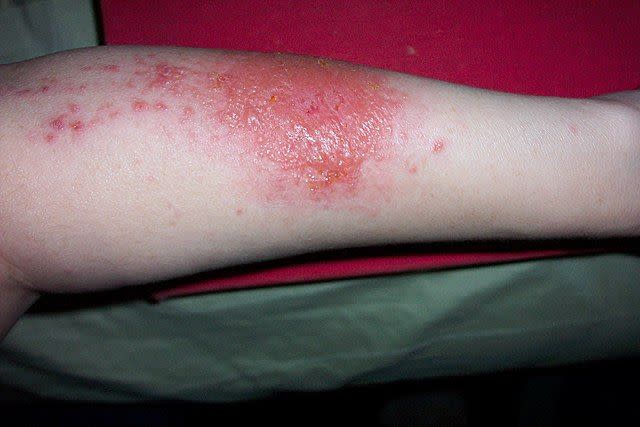
This common type of eczema is caused by a reaction to something that touched your skin, according to Dr. Yadav. That can include an allergic reaction (also known as allergic contact dermatitis) like if someone has a latex allergy and wears a latex glove. It can also be caused by an irritant (also known as irritant contact dermatitis) and can present after you come into contact with something like harsh household cleaning supplies or poison ivy. “This form of eczema can even blister and is usually exquisitely itchy,” she says. “The skin will look inflamed, irritated, and scaly in the area that was touched by the trigger.”
Hand eczema
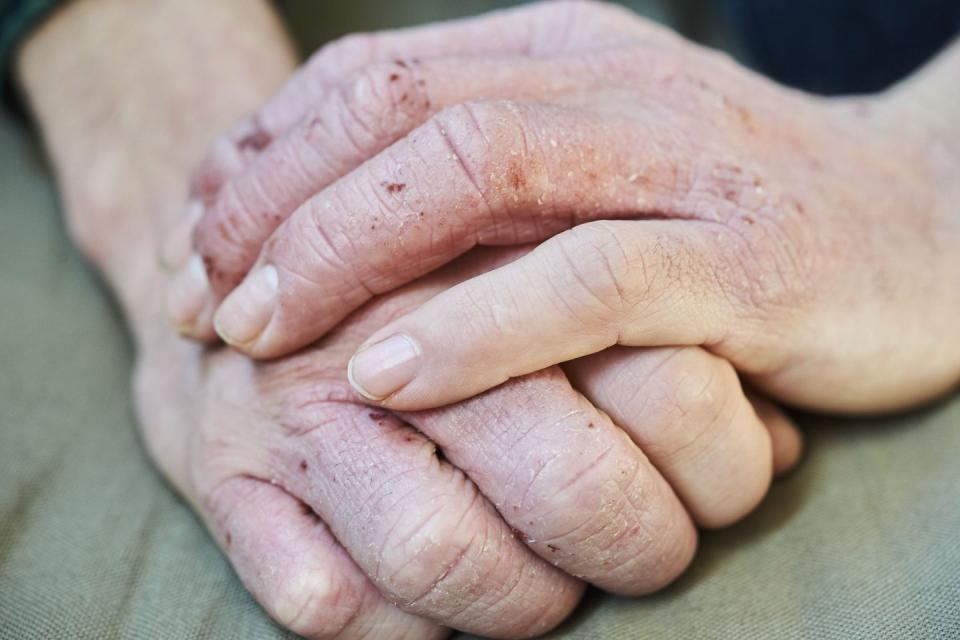
As the name implies, Dr. Singh says those with hand eczema will notice outbreaks are isolated to the hands.
Similar to contact dermatitis, this can appear after exposure to certain materials or ingredients. “Hand eczema is the form I most often see in adults,” says Dr. Yadav. “It can be triggered or flared by irritants like hand washing or hand sanitizer. The skin gets very dry and can even crack and fissure.” She says that people who are frequently exposed to chemicals (like harsh cleaning supplies or hair dye) may be more likely to experience this form of eczema. The best lotions for eczema might be able to help soothe itchy skin.
Dyshidrotic eczema
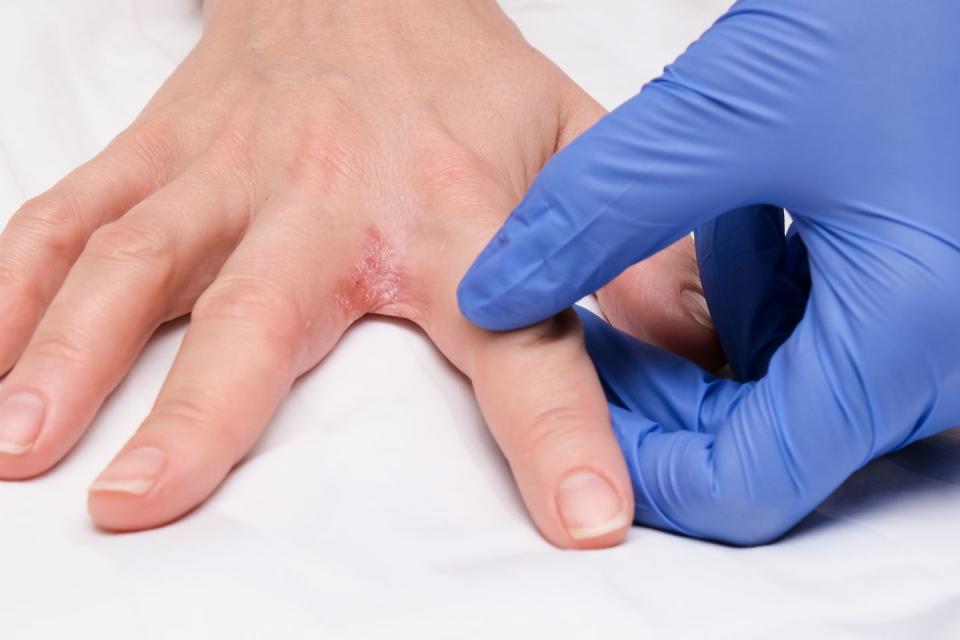
Dr. Singh says that dyshidrotic eczema is a subset of hand eczema that presents with very small, itchy blisters (and can also occur on the feet).
Unlike hand eczema, Dr. Yadav says these itchy blister-like lesions are more likely caused by genetic and internal factors.
Neurodermatitis
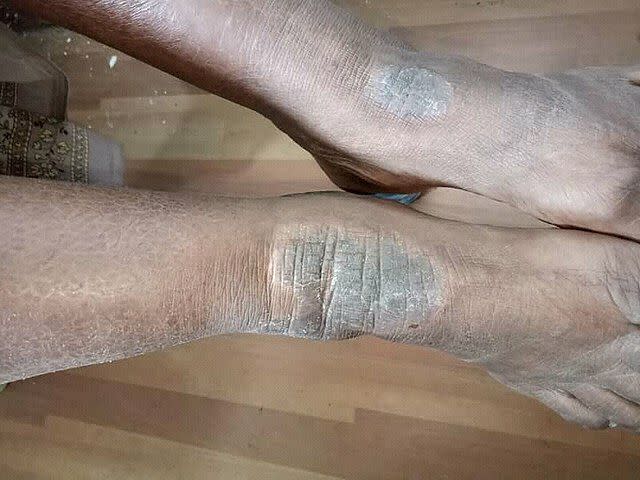
While atopic dermatitis can be found across the body, Dr. Yadav says neurodermatitis is usually limited to one or two areas, particularly the back or the lower legs. “It is characterized by darker patches that cause intense itching,” she says, adding that sufferers can find themselves stuck in a vicious cycle during a flare-up. “Scratching provides temporary relief but will prevent skin's recovery and often make the itching worse—the scratching can often lead to bleeding and infection. Soothing agents combined with topical agents can be helpful in treatment of neurodermatitis but getting a board-certified dermatologist to diagnose this kind of itch is important before proceeding with treatment.”
Stasis dermatitis
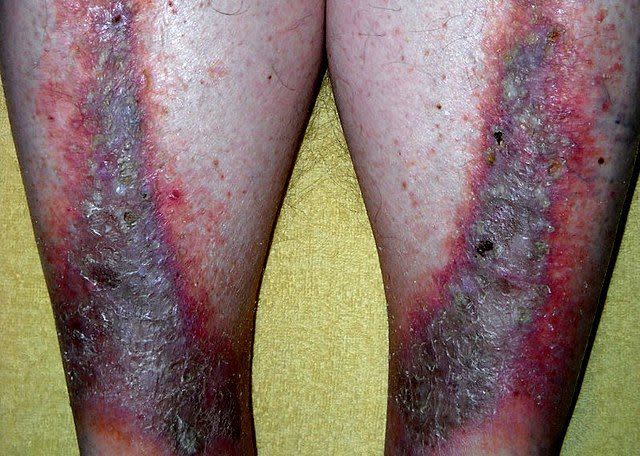
Dr. Singh says that stasis dermatitis and another fairly common type of eczema in older adults that presents on the lower extremities and can be caused by several factors related to the ability for blood to flow freely through your body, like high blood pressure, poor circulation, and more. The image pictured is an extreme case.
What causes eczema?
Eczema can be caused by underlying genetic and immune factors or by external triggers. “Even the skin microbiome has a role to play! Often triggers for flares can be environmental (such as cold weather), excessively hot showers, fragranced beauty products, and detergents, and stress.” To figure out what might be behind your eczema flare-up, Dr. Yadav suggests keeping an “eczema diary” tracking your habits and stressors can help you identify your unique triggers.
You Might Also Like

